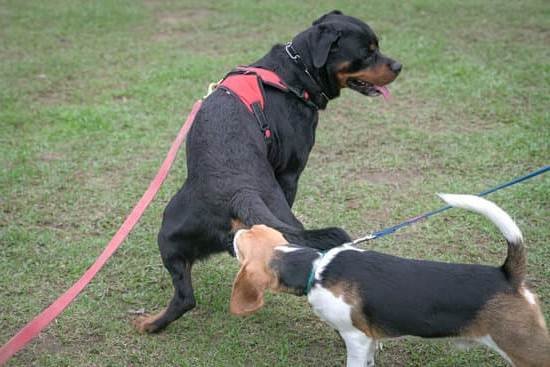Are you wondering how to train a dog not to leave the yard? Training your furry friend to stay within the boundaries of your yard is crucial for their safety and your peace of mind. In this article, we will explore the step-by-step process of effectively training your dog to remain in the yard, ensuring they are safe and well-behaved.
Assessing the current behavior of your dog in the yard is the first step in understanding their tendencies and identifying any specific challenges or distractions that may lead them to leave the yard. By observing their behavior, you can tailor your training approach to address their individual needs.
Establishing boundaries and using physical barriers are essential in creating a clear distinction between what areas are off-limits for your dog. This, coupled with positive reinforcement training and command training, will help instill good behavior and obedience in your dog when it comes to staying within the confines of your yard. By consistently implementing these techniques, you can gradually allow more freedom while closely monitoring their progress.
Training a dog not to leave the yard requires patience, consistency, and persistence. Understanding specific challenges and distractions in the yard will allow you to troubleshoot common issues and setbacks that may arise during the training process. As you navigate through this journey, remember that enjoying a well-trained dog and a safe yard environment is achievable with dedication and commitment.
Assessing the Current Behavior of the Dog in the Yard
Before beginning any training to keep a dog within the yard, it is important to assess the current behavior of the dog. This involves observing how the dog behaves when let out into the yard, paying attention to any tendencies to escape or roam beyond the boundaries.
Take note of any specific triggers that cause the dog to attempt leaving the yard, such as other animals or noises from outside. Understanding these behaviors and triggers will be crucial in developing an effective training plan tailored to your dog’s needs.
One way to assess your dog’s behavior in the yard is by using positive reinforcement techniques. Observe what entices your dog to stay within the boundaries and what motivates them to leave. This information will help in creating a plan that focuses on reinforcing desired behaviors while discouraging unwanted ones.
Additionally, consider how your dog responds to command training in other aspects of their behavior. This can give insight into how receptive they may be to learning commands that keep them within the yard.
It is also important to evaluate any potential risks or dangers outside of your property that could be influencing your dog’s behavior. For example, if there are areas where your dog could potentially escape or if there are attractive stimuli just beyond your property line, this could impact their desire to stay within the boundaries.
Identifying these factors will allow you to address them as part of your training plan and implement appropriate measures to mitigate their influence on your dog’s behavior.
| Assessing Behavior | Considerations |
|---|---|
| Positive Reinforcement | Observing what motivates the dog |
| Command Training Response | Evaluating receptiveness |
| Risks and Dangers Outside Property | Identifying potential influences on behavior |
Establishing Boundaries and Using Physical Barriers
When training a dog to stay in the yard, establishing boundaries is essential for their safety and well-being. This can be done by using physical barriers such as fences or invisible dog fences.
Fences provide a visible boundary for the dog, while invisible dog fences use an underground wire to create a boundary and deliver a mild electric shock or sound if the dog crosses it. Both options help reinforce the idea of where the yard begins and ends, and provide a clear understanding for the dog.
In addition to fences and invisible dog fences, other physical barriers like garden gates or hedges can be used to further define the boundaries of the yard. It is important to ensure that these barriers are secure and not easily breached by the dog. Consistency in using these physical barriers is crucial during the initial stages of training, as it helps the dog understand where they are allowed to roam freely.
Furthermore, when establishing boundaries and using physical barriers, it is important to consider the size and breed of the dog. For example, larger breeds may require taller fences, while smaller breeds may find gaps in hedges or gates that need to be addressed. Understanding the specific needs of your dog will ensure that the physical barriers are effective in keeping them within the yard while allowing them space to move around freely.
| Physical Barrier | Effectiveness |
|---|---|
| Fences | Provides a visible boundary for dogs |
| Invisible Dog Fences | Reinforces boundaries with mild electric shock or sound |
| Garden Gates/Hedges | Further defines boundaries and requires security check |
Implementing Positive Reinforcement Training
Understanding the Concept of Positive Reinforcement
Positive reinforcement training involves rewarding a dog for good behavior, rather than punishing them for undesirable actions. This method is based on the principle that behaviors followed by positive outcomes are likely to be repeated. When training a dog to stay in the yard, positive reinforcement can be an effective tool to encourage them to remain within the boundaries.
Choosing the Right Rewards
When implementing positive reinforcement training, it is crucial to choose appropriate rewards that motivate your dog. These rewards can include treats, toys, praise, or any other form of positive reinforcement that your dog responds to. By using these rewards consistently when your dog stays within the yard, you can reinforce the desired behavior and make it more likely to occur in the future.
Consistency and Timing
Consistency and timing are key components of positive reinforcement training. It is important to reward your dog immediately after they demonstrate the desired behavior of staying within the yard. This helps them associate their action with a positive outcome. Additionally, it is essential to be consistent in providing rewards every time your dog behaves as desired, as this will help solidify their understanding of what is expected of them.
Implementing positive reinforcement training can be a highly effective method for teaching a dog to stay in the yard. By understanding this concept and using appropriate rewards consistently and in a timely manner, you can encourage your dog to remain within set boundaries and create a safe environment for both your pet and your neighbors.
Using Command Training to Keep the Dog in the Yard
Training a dog to stay in the yard can be achieved through the use of command training. Once the boundaries and physical barriers have been established, implementing command training strengthens the dog’s understanding of where it is allowed to roam. This method relies on consistent reinforcement of specific commands to keep the dog within the yard.
Choosing and Teaching Commands
Selecting clear and simple commands, such as “stay” or “no”, is essential for effective command training. These commands should be taught gradually and consistently reinforced through positive reinforcement techniques. By using treats and verbal praise, the dog will associate staying within the yard with positive outcomes.
Practice and Reinforcement
Regular practice sessions are crucial for reinforcing command training. With repetition and positive reinforcement, the dog will learn to associate obeying commands with positive rewards. It is important to practice these commands in various scenarios and environments to ensure that the dog understands them regardless of distractions.
Consistency and Patience
Consistency is key in command training; all family members and caregivers should use the same commands and reinforce them in a consistent manner. It is also important to remain patient throughout this process, as learning new commands takes time for dogs. By remaining calm and persistent, owners can effectively train their dogs to stay in the yard using command training techniques.
Addressing Specific Challenges and Distractions in the Yard
One of the key aspects of training a dog to stay in the yard is addressing specific challenges and distractions that may cause the dog to want to leave the yard. Dogs are naturally curious animals, and there are many things outside of the yard that could grab their attention. This section will provide guidance on how to identify and address these challenges effectively.
First, it’s important to identify what specific challenges and distractions exist in your yard that may be tempting for your dog. This could include neighboring pets, wildlife, or even unfamiliar sounds or smells.
Once you’ve identified these potential distractors, you can begin to take proactive measures to minimize their impact on your dog’s behavior. For example, if neighboring pets are causing your dog to want to leave the yard, consider installing a taller fence or creating a barrier that limits your dog’s exposure to these distractions.
In addition to physical barriers, it’s essential to provide mental stimulation for your dog within the boundaries of the yard. Engage in interactive play with toys, set up obstacle courses or agility exercises, or create a digging area for your dog.
By providing engaging activities within the yard, you can help redirect your dog’s focus away from potential distractions outside of the yard. Addressing specific challenges and distractions in the yard requires careful observation and proactive measures to ensure that your training efforts are as effective as possible.
Consistency and Persistence in the Training Process
Training a dog to stay in the yard requires consistency and persistence in the training process. It is important to establish clear and consistent rules for the dog to follow, as well as constantly reinforce those rules. Here are some tips for maintaining consistency and persistence in training:
- Set clear boundaries: Establishing clear boundaries for the dog will help them understand where they are allowed to roam and where they should stay. Use physical barriers such as fences or invisible fences to create a clear boundary for the dog.
- Use a consistent training schedule: Dogs respond well to routine, so it’s important to have a consistent training schedule. This could include regular training sessions at the same time each day, as well as consistently reinforcing the rules throughout the day.
- Be persistent with reinforcement: Positive reinforcement is key in training a dog to stay in the yard. Whenever the dog stays within the boundaries of the yard, be sure to praise and reward them consistently. Likewise, if they stray from the yard, redirect them back and do not reward this behavior.
Consistency and persistence will be crucial in ensuring that the dog understands and follows the rules of staying within the yard. By providing clear boundaries, maintaining a consistent training schedule, and persistently reinforcing positive behavior, you can effectively train your dog to stay within the yard.
By following these tips for consistency and persistence in training, you can ensure that your efforts will pay off in having a well-trained dog who understands their boundaries and stays safely within the yard. Remember that every dog is different, so be patient and adaptable in your approach while still being persistent with your training efforts.
Gradually Allowing More Freedom and Monitoring Progress
As the training process continues, it is important to gradually allow your dog more freedom while closely monitoring their progress. This step is crucial in ensuring that your dog understands and respects the boundaries set in place, ultimately leading to a well-trained and obedient pet.
To gradually allow more freedom for your dog in the yard, consider the following steps:
- Start by allowing the dog supervised access to areas just beyond the designated boundaries.
- Observe how the dog behaves and reacts when given this additional freedom.
- If the dog attempts to leave the yard, gently redirect them back within the boundaries.
Monitoring progress is also essential during this stage of training. Here are some ways to effectively monitor your dog’s progress:
- Keep a log or journal of your dog’s behavior and responses during training sessions.
- Use positive reinforcement techniques to reward good behavior when your dog stays within the yard boundaries.
- Consistently evaluate whether your dog is respecting the established boundaries without constant supervision.
By gradually giving more freedom and closely monitoring progress, you can effectively train your dog to stay in the yard while ensuring their safety and obedience.
Troubleshooting Common Issues and Setbacks in Training
Training a dog to stay in the yard can be a challenging process, and it is not uncommon for pet owners to encounter issues and setbacks along the way. One common issue is when a dog becomes easily distracted by external stimuli such as other animals, people, or noises from the surrounding environment.
In such cases, it is important to address these distractions through additional training and reinforcement techniques. This may include redirecting the dog’s attention back to the yard using commands and positive reinforcement.
Another common setback in training is when a dog consistently tests the established boundaries or physical barriers. This behavior may require a reevaluation of the effectiveness of the existing boundaries and implementation of additional measures to prevent the dog from leaving the yard. It is important to ensure that all physical barriers are secure and free from any potential escape routes for the dog.
Additionally, some dogs may exhibit stubborn behavior or resistance towards staying within the yard despite consistent training efforts. In such instances, it is important for pet owners to remain patient, consistent, and persistent in their training approach. Revisiting basic obedience training and reinforcing positive behaviors can help address this challenge over time.
By recognizing common issues and setbacks in training a dog to stay in the yard, pet owners can take proactive measures to address these challenges effectively. It is crucial to remain dedicated to the training process and seek professional guidance if needed to ensure that both the pet and its environment remain safe at all times.
Conclusion
In conclusion, training a dog to stay in the yard is essential for the safety and well-being of both the dog and the surrounding community. By understanding the importance of this training and taking proactive steps to establish boundaries, use positive reinforcement, and implement command training, dog owners can create a safe and enjoyable environment for their pets.
Consistency and persistence are key in the training process, as well as addressing specific challenges and distractions that may arise in the yard.
As the training progresses, it is important to gradually allow more freedom for the dog while monitoring their progress closely. This can help build trust between the owner and the pet while ensuring that the dog remains safe within the yard. Troubleshooting common issues and setbacks in training is also crucial for success, as every dog is unique and may require different approaches to learning.
Ultimately, with dedication and effort, enjoying a well-trained dog and a safe yard environment is achievable. Through effective training methods, patience, and a deep understanding of the needs of their pets, dog owners can create an environment where their dogs are happy, healthy, and safely contained within their yard. This not only benefits the dog but also provides peace of mind for the owner and promotes harmony within the community.
Frequently Asked Questions
Can You Train a Dog to Stay in the Yard?
Yes, you can train a dog to stay in the yard through consistent and positive reinforcement. Using commands, rewards, and boundaries, you can teach your dog to understand where they are allowed to be within the yard. Training should be done gradually and with patience to ensure that the dog learns to stay within the designated area.
How Do I Train My Dog Not to Run Away Outside?
Training a dog not to run away outside involves teaching them recall commands and providing plenty of exercise and mental stimulation. Using positive reinforcement and keeping them on a leash or long line initially can help prevent them from running away.
It’s important to address any underlying behavioral issues that may be causing the desire to run away, such as fear or anxiety.
How Do I Train My Dog Not to Go Outside Without Permission?
To train your dog not to go outside without permission, consistency is key. This can be achieved by reinforcing boundaries both inside and outside the house, using verbal cues and rewards when they obey commands. Additionally, ensuring that all household members are on the same page when it comes to training will help reinforce these behaviors in your dog.

Welcome to the blog! I am a professional dog trainer and have been working with dogs for many years. In this blog, I will be discussing various topics related to dog training, including tips, tricks, and advice. I hope you find this information helpful and informative. Thanks for reading!





